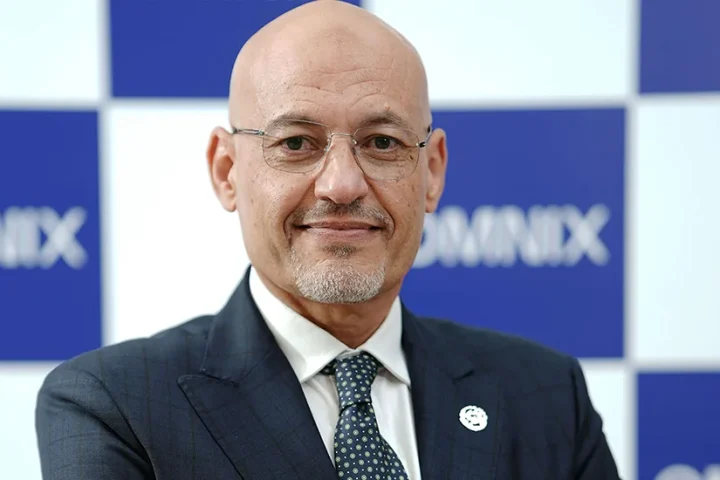On one side of digital business is the incumbent marketplace player, who prefers to invest only in a solid business case and focuses on predictability over speed and innovation. On the other side is the digital-era market disrupter, who believes in innovation to win big while managing risk by failing fast and prefers to focus on innovation and speed over predictability.
Two types of CEO mindsets emerge as the business world shifts to be more influenced by digital business. CEOs, CIOs and other executives understand a shift in business is necessary to adapt to the changing world, but may fail to realise how important their own mindset is to the success of the transition. While the world is moving forward at breakneck speed, the core beliefs wired into our brains often are not.
The leader’s mindset provides a frame of reference that affects how they hear, interpret and act on information, which in turn affects how the company operates. Successful disruptive digital leaders are able to transform themselves to transform the company.
Six mindset traits can help you gauge your digital dexterity against those of a successful disruptive digital leader.
#1 Thrive despite uncertainty
While an incumbent marketplace player might be frozen or flail in the face of digital era the uncertainty, a disruptive digital leader understands and embraces the idea that uncertainty is inevitable. Instead of expending energy trying to change that, these leaders explore what is technologically possible, how changes will disrupt the markets, and the risk-reward tradeoffs.
However, embracing uncertainty does not mean throwing caution to the wind as far as sound decisions of fiscal accountability. It does mean establishing a plan that allows for change and evolution, and does not create a fallacy of fake predictability.
#2 Breakthrough business outcomes
Since traditional incremental thinking runs the risk of irrelevance in the digital world, leaders should focus on ideas that leapfrog ahead. Digital leaders are visionary when it comes to the technology frontier, but all decisions are still rooted in fiscal discipline and overall enterprise mission.
This demands a risk-tolerant mindset — future technologies are volatile and user adoption difficult to predict. But a true digital leader is driven by the challenge and potential for creating net-new business value by harnessing breakthrough technology.
#3 Exploit digital levers
It is easy to get distracted by glitzy new technologies pursued for technology’s sake. Digital leaders look beyond these distractions, seeking to master the underlying digital-era competitive levers. The goal should be to secure a position as a leader in areas such as platform-based business model economics or turning data into customer value via artificial intelligence. Select levers most critical to sustaining or growing your competitive advantage then focus on making it a core competency of the company.
#4 Start, experiment, learn
Incumbents might prefer to wait until technology-enabled breakthroughs are proven, while a digital leader’s mindset is that stalling due to uncertainty means another company will have already seized the opportunity. Digital leaders understand well-grounded strategic bets based on expected business outcomes and digital levers need to be the focus of the company.
#5 Culture of true creativity
These CEOs will take a Start-Experiment-Learn-Iterate approach as a pathway to a breakthrough solution instead of waiting for clarity before proceeding. With certain disciplines, such as lean startup, minimum viable product and data-evidence-based experimentation, companies can harness experimentation as a path to new value while mitigating downside risk.
#6 Innovation culture
In a digital era, rich in disruption, companies must be able to innovate faster than their competitors. To encourage innovation at the needed velocity, digital leaders establish a culture of true creativity. They visibly champion this belief at every level from new hires to the board room, actively role-modelling a culture that encourages risk taking and discovery.
Companies that are risk-averse will be too slow to innovate, as employee thinking and actions remain bogged down in traditional industry rules. On the other side, companies that encourage speed and embrace the learning from inevitable failures along the way are much more equipped to succeed in the digital world.
#7 Cherish digital talent
CIOs already cite access to needed skills such as data science as the top barrier to success. At the top of the list for successful digital leaders is hiring and unleashing the best digital talent. They understand that those with engineering, science and data skill sets will become some of the most prized assets in the digital era.
Top-notch talent may be motivated by something other than just financial rewards, and digital leaders are astute at creating a compelling sense of purpose to attract and reward talent. Certain companies allow key talent to work on preferred projects, and might even let them select their own manager. Top talent also benefits from working at a company that understands the digital world and allows them to succeed in it.
Key takeaways
- Two types of CEO mindsets emerge as business shifts to be more influenced by digital business.
- CIOs already cite access to needed skills such as data science as the top barrier to success.
- At the top of the list for successful digital leaders is hiring and unleashing the best digital talent.
- Embracing uncertainty does not mean throwing caution to the wind.
- Establish a plan that allows for change and does not create a fallacy of fake predictability.
- Traditional incremental thinking runs the risk of irrelevance in the digital world.
- Leaders should focus on ideas that leapfrog ahead.
- Digital leaders are visionary when it comes to the technology frontier.
- All decisions are still rooted in fiscal discipline and overall enterprise mission.
- Future technologies are volatile and user adoption difficult to predict.
- A true digital leader is driven by potential for creating net-new business value by harnessing breakthrough technology.
Graham Waller at Gartner spells out seven digital mindset traits that can help top executives drive transformation initiatives successfully.



















